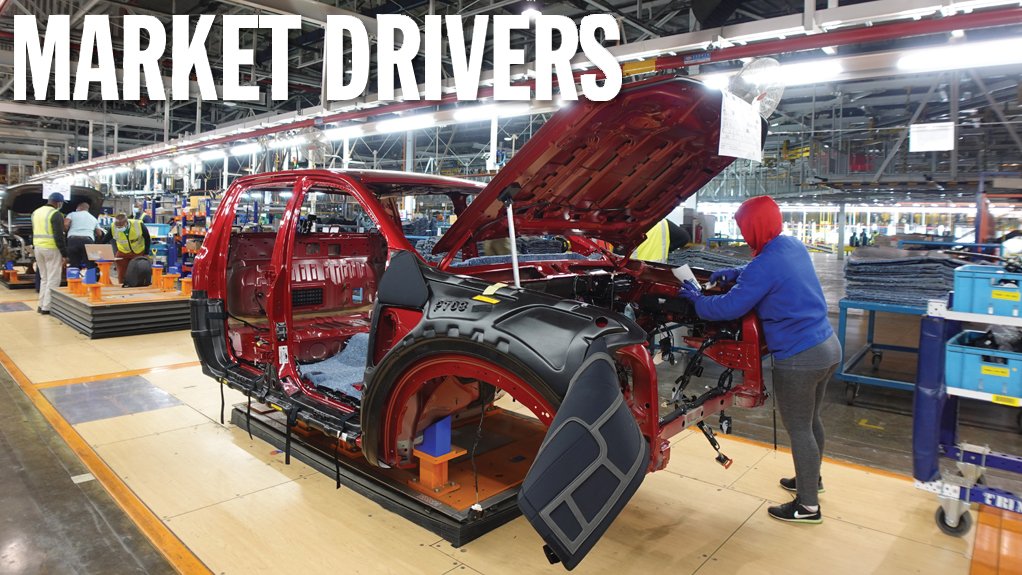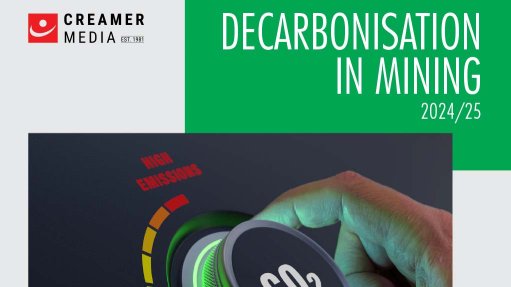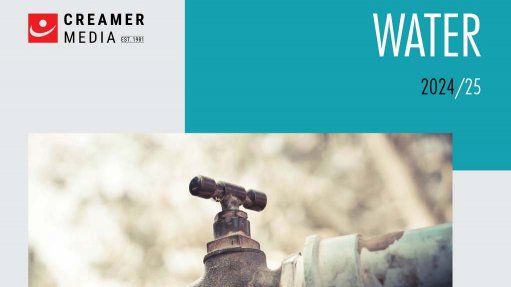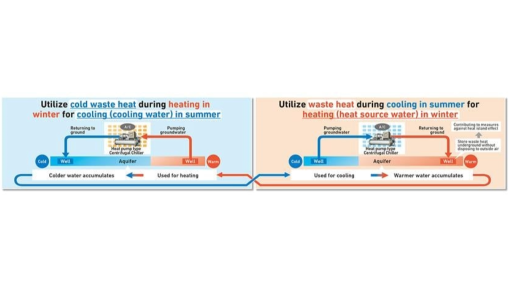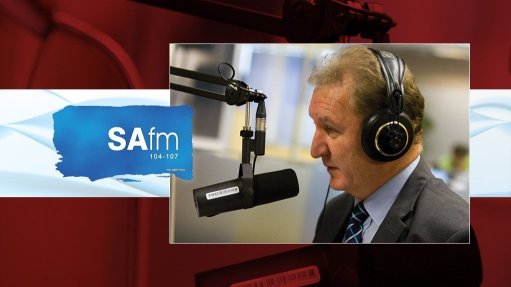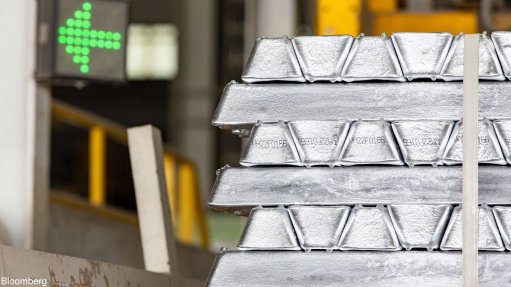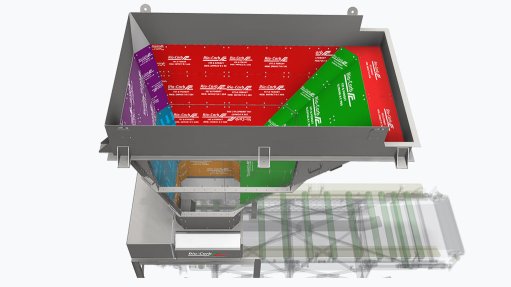Eight takeaways from an in-flux 2024 new-vehicle market
It may have been 60 years ago, but Bob Dylan’s 1964 hit perhaps best describes conditions in last year’s automotive market – The Times They Are A-Changin’.
2024 was the year in which the dominance of the traditional US and European automotive powerhouses was (rather successfully) challenged, in both the global and local markets.
Much of what happened in the domestic market could be traced back to South Africa’s continuously struggling economy, coupled with China’s emergence as the world’s new automotive powerhouse.
It was a year of slow, but steady, shifts – with some likely to continue well into the future.
Here are eight key takeaways from the 2024 local sales numbers, shared by Lightstone Auto, provider of comprehensive data, analytics and systems for the auto sector.
Number One: Minibus, Half-Ton Bakkie Sales Suffered Big Losses
Total South African new-vehicle sales declined by 3% in 2024, to reach 515 853 units, compared with the year before.
The light commercial vehicle (LCV) market, in particular, struggled to reach the highs seen in 2023.
The LCV segment includes bakkies, panel vans, minibuses and small trucks.
According to Lightstone, the 2024 decline can be predominantly attributed to a drop-off in minibus sales (49% down on 2023) and half-ton pickups (44% lower).
The minibus taxi market faced significant financing challenges, while Nissan discontinued production of its NP200 half-tonner at its Tshwane plant in Rosslyn.
The demise of the NP200 also signalled the end of the popular half-ton bakkie in the local market altogether, which featured choices such as the Opel Corsa, Datsun 1400, Mazda Rustler, Fiat Strada and Ford Bantam.
Every now and then, a manufacturer such as Toyota or Volkswagen will hint at reviving the segment in South Africa, which is still alive and well in South America.
However, the cost of converting that continent’s left-hand-drive models into right- hand-drive derivatives for the South African market has proved prohibitive to date.
Number Two: Passenger Car Sales Recovered Well
In contrast to LCVs, the passenger-car market, which started off 2024 on the slow side, recovered well, ending the year 1.2% up on 2023.
At the midpoint of last year, passenger-car sales were 7% lower compared with the same point in 2023.
The second half of the year, however, saw sales climb by 9.4% over the second six months of 2023 – which Lightstone views as an encouraging sign for the auto industry as it heads into 2025.
With interest rates at a near two-year low, and further cuts expected this year – should inflation remain under control – the new- vehicle market is likely to recover from last year’s decline, notes Lightstone.
Current in-house projections at the research group show market growth of around 5.7%, indicating overall sales in the region of 545 000 units for 2025.
Number Three: Chinese Sales Have Overtaken Korean Sales
Japanese-branded vehicles continued to dominate the South African light-vehicle (LV) market in 2024, taking an almost 50% market share.
The LV market refers to the combined passenger and LCV segments.
German marquees maintained their second place, with a 18% share of the market (but down from 23% in 2020).
Chinese brands, however, made a big leap forward in 2024, overtaking Korean-branded vehicle sales to take third place, at 10% of the local LV market, up from 6% in 2022.
Sales of Korean brands, such as Hyundai and Kia, and American brands, such as Ford and Jeep, rounded out the top five in South Africa.
The growth of Chinese brands is more than likely to continue.
In 2023, five Chinese brands reported their domestic sales across the LV market to industry body naamsa | The Automotive Business Council.
By December last year, this number had jumped to nine, with more brands expected to join this year.
In fact, this year could see China overtake Japan – with ten brands on the South African market currently – as the country with the most brands reporting sales in the South African LV market.
Another important market movement to note is that China’s share of global vehicle production has grown from 29% in 2018, to 32% in 2023.
Germany, the home of Volkswagen, BMW and Mercedes-Benz, is no longer in the top five.
Number Four: SA-Made Vehicles Still in the Lead, but India Is Closing the Gap – Fast
South African-built vehicles continued to lead imported vehicles in the domestic LV sales charts in 2024, at 37% of all LV sales.
In 2020, this number was just under 45%.
The Toyota Hilux, Volkswagen Polo Vivo, Ford Ranger, Toyota Corolla Cross and Isuzu D-Max accounted for 69% of all locally built vehicle sales, and made up 26% of the overall LV market.
Other vehicles made locally include the Nissan Navara, Volkswagen Polo, BMW X3, Toyota Fortuner and Mercedes-Benz C-Class.
Indian-built vehicles, however, finished 2024 a very close second, at 36% of all LV sales.
In 2020, this was figure was just under 25%.
The top-ranked Indian-made vehicles for 2024 included the Suzuki Swift (6th best- selling model in the overall LV market), the Hyundai Grand i10 (7th), the Toyota Starlet (8th), the Mahindra Scorpio Pik-up (13th), and the Kia Sonet (15th).
Number Five: South Africans Are Warming to New-Energy Vehicles
Sales of new-energy vehicles –hybrids, plug-in-hybrids (PHEVs) and battery electric vehicles (BEVs) – have increased their share of the local passenger-car market from 0% in 2021 to 1% in 2022. This figure doubled to 2% in 2023, again doubling to 4% in 2024.
Sales of hybrids increased from 101 units in 2020, to 13 553 units last year.
Sales of PHEVs jumped from 131 units in 2020, to 737 units in 2024.
BEV sales increased from 92 units in 2020, to 1 231 units last year.
Sales are improving as more brands – and importantly, more affordable brands – are introducing NEVs in the South African market.
Number Six: SA Consumers Are Still Looking for Cheaper Cars
The growth in made-in-India vehicle sales was primarily driven by their affordability, with India the globe’s small-car production hub.
Indeed, the “exceptional variety of vehicles coming out of India at competitive price points” continue to appeal to the local market, especially to cash-strapped consumers on the hunt for a bargain, says Lightstone.
The same bang-for-your-buck principle applies to the popularity of Chinese vehicles, as these manufacturers typically offer higher- specification vehicles for the same price as their European and American competitors.
The affordability trend was also evident in the continued migration to smaller, less expensive B-segment vehicles, with sales shrinking in the larger, typically more costly C- and D-segment vehicles.
This buying-down trend heavily impacted the premium market, where sales were down from 34 428 units in 2023, to 30 634 units last year.
In 2020, premium cars had a 13% share of the passenger-car market, dropping to 9% in 2024.
Sales in the entry-level segment made up a substantial 18% of all reported passenger- car sales in 2024.
The top-five vehicles in this segment – the Volkswagen Polo Vivo, Hyundai Grand i10, Toyota Vitz, Renault Kwid and Renault Triber – contributed 85% of total sales in the entry-level market.
Lightstone adds that the sales-weighted average price of a vehicle in the entry-level segment is around 50% of the weighted average price in the overall passenger market – a ratio which has proven to be reasonably consistent over the last six years.
This means that in 2024 the average price of an entry-level segment vehicle was around R250 000, compared with the passenger-car market average of R496 000.
Number Seven: South Africans Love Their SUVs
Sport-utility vehicles (SUVs) continue to gain popularity in South Africa, to the detriment of sedans and other vehicles with lower ground clearance.
In 2018 there were 114 model ranges that fell into the SUV/crossover category.
In 2024 that number jumped to 166, reports Toyota South Africa.
SUVs now account for more than 50% of passenger-car sales.
Number Eight: A Tough Year for Trucks, but 2025 May Be Better
While truck sales were down in 2024 to 31 045 units compared with 2023’s 32 690- unit market, Lightstone believes this market could see an uptick to 32 920 new trucks this year.
2023 was a bumper year for truck sellers, driven to some degree by Transnet’s collapse, which forced a significant shift in freight from rail to road.
Many truck fleet owners would, however, need to look at replacing their vehicles this year or the next.
Comments
Press Office
Announcements
What's On
Subscribe to improve your user experience...
Option 1 (equivalent of R125 a month):
Receive a weekly copy of Creamer Media's Engineering News & Mining Weekly magazine
(print copy for those in South Africa and e-magazine for those outside of South Africa)
Receive daily email newsletters
Access to full search results
Access archive of magazine back copies
Access to Projects in Progress
Access to ONE Research Report of your choice in PDF format
Option 2 (equivalent of R375 a month):
All benefits from Option 1
PLUS
Access to Creamer Media's Research Channel Africa for ALL Research Reports, in PDF format, on various industrial and mining sectors
including Electricity; Water; Energy Transition; Hydrogen; Roads, Rail and Ports; Coal; Gold; Platinum; Battery Metals; etc.
Already a subscriber?
Forgotten your password?
Receive weekly copy of Creamer Media's Engineering News & Mining Weekly magazine (print copy for those in South Africa and e-magazine for those outside of South Africa)
➕
Recieve daily email newsletters
➕
Access to full search results
➕
Access archive of magazine back copies
➕
Access to Projects in Progress
➕
Access to ONE Research Report of your choice in PDF format
RESEARCH CHANNEL AFRICA
R4500 (equivalent of R375 a month)
SUBSCRIBEAll benefits from Option 1
➕
Access to Creamer Media's Research Channel Africa for ALL Research Reports on various industrial and mining sectors, in PDF format, including on:
Electricity
➕
Water
➕
Energy Transition
➕
Hydrogen
➕
Roads, Rail and Ports
➕
Coal
➕
Gold
➕
Platinum
➕
Battery Metals
➕
etc.
Receive all benefits from Option 1 or Option 2 delivered to numerous people at your company
➕
Multiple User names and Passwords for simultaneous log-ins
➕
Intranet integration access to all in your organisation



